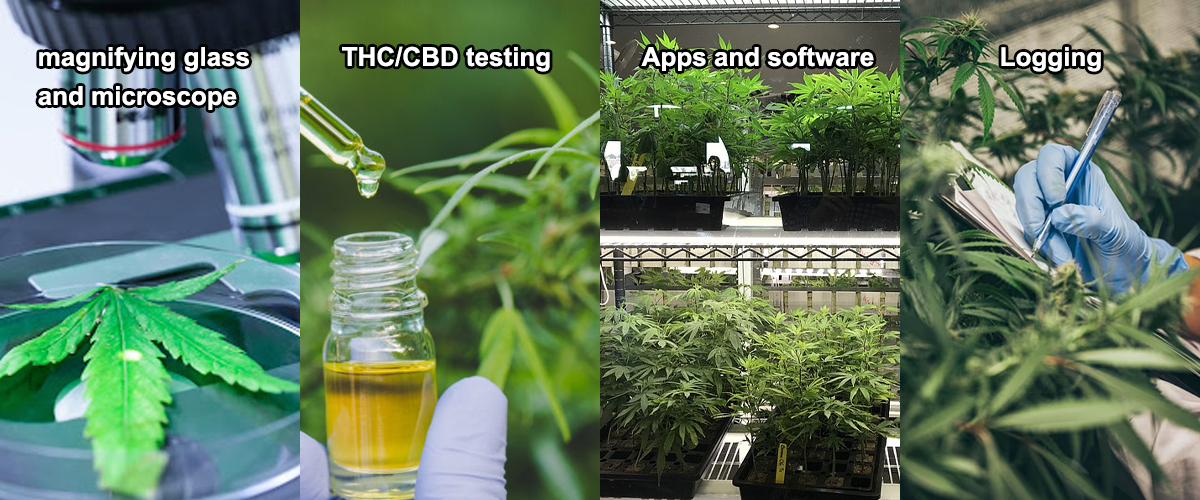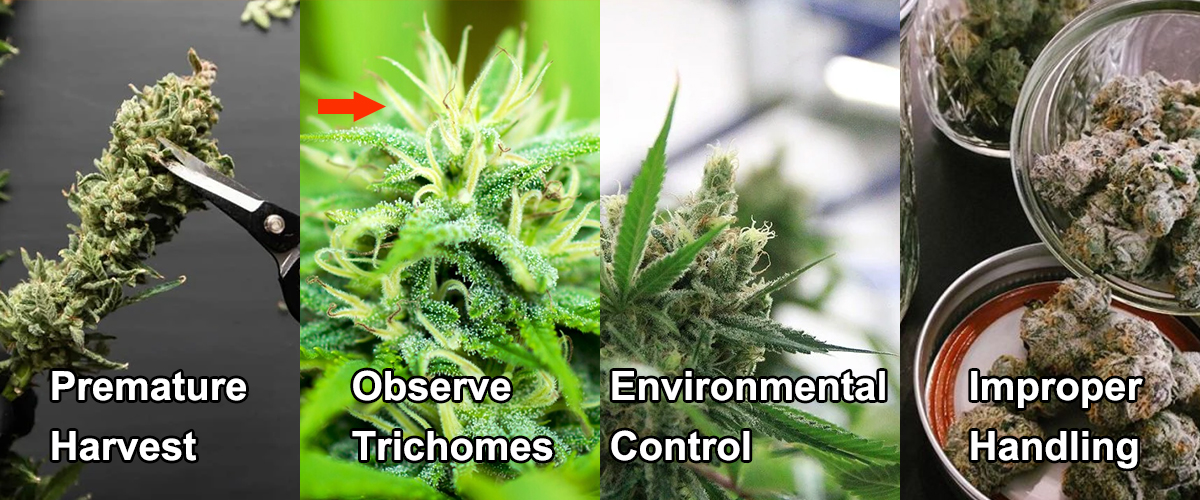In the world of cannabis cultivation, selecting the optimal time for harvest is a science, not guesswork. It involves meticulous observation of each plant with a magnifying glass, much like a detective. T
he maturity of cannabis flowers can be determined by the color change of the trichomes—a type of tiny gland that covers the surfaces of the buds and leaves.
These glands, also known as terpene glands, are the primary production sites for THC, CBD, and other cannabinoids.
In the early stages of flowering, the trichomes are usually clear or slightly white, indicating that THC production is actively ongoing, but not yet at its peak. As the flowering progresses, these glands gradually turn milky white, signaling that the THC content is nearing its peak.
The ideal time to harvest is when most of the trichomes have turned from milky white to amber. At this point, the THC content is high, and other cannabinoids like CBD are more balanced, offering a more comprehensive effect.
Tools and methods

In cannabis cultivation, using the right tools and methods to determine the best time for harvest is crucial. To accurately assess the maturity of cannabis plants, cultivators rely on several key tools and techniques:
Magnifying glasses and microscopes: The most basic and essential tools are magnifying glasses, especially those that offer at least 30x magnification. Such magnifying glasses allow for a clear observation of the color changes in the trichomes on the cannabis buds, which is a critical indicator of maturity.
THC/CBD testing kits: Portable chemical testing kits are available on the market, allowing for simple at-home testing of the approximate content of THC, CBD, and other active components in the cannabis buds. These tests are particularly useful for cultivators who wish to optimize harvest times based on chemical composition.
Applications and software: With technological advancements, some applications and software have been developed to help cultivators monitor the growth status and maturity of plants. These tools can analyze images taken by digital microscopes, automatically recognize color changes in the trichomes, and provide data-based harvesting recommendations.
Logbooks: While not a direct observation tool, maintaining detailed cultivation logs is an effective method to help cultivators track observations and related actions at different growth stages. Over time, these records can become an important reference for determining the best time to harvest.
In the field of cannabis cultivation, mastering the appropriate tools and methods is like discovering the secret to successful planting.
With tools like magnifying glasses and testing kits, you can accurately determine the best time to harvest like an expert. This not only requires technical skill but also enhances your cultivation skills, improving the quality and yield of the cannabis.
Common misconceptions and tips

In cannabis cultivation, especially during the harvest stage, there are several common misconceptions and challenges. Understanding these misconceptions can help you avoid typical mistakes and ensure you fully exploit the plant's potential. Let me detail a few key points:
Premature harvesting: Many novice cultivators may choose to harvest too early due to eagerness to see results. Although early-harvested cannabis can still be effective, its chemical components may not be fully matured, potentially leading to lower THC content and less than optimal effects. Prematurely harvested cannabis often lacks aroma and flavor.
Overlooking trichome observation: The key to determining the right time to harvest lies in observing the color changes in the plant's trichomes. Some cultivators may overlook this, relying solely on the overall growth time to determine maturity, which is often inaccurate. Observing trichomes turn from clear to milky white and finally amber using a magnifying glass or microscope is the best way to predict the harvest time.
Neglecting environmental control: Proper environmental conditions are crucial for the maturation of cannabis. Some cultivators may ignore the effects of lighting, temperature, and humidity on plant maturity. Suitable environments not only promote healthy growth of cannabis but also help optimize the synthesis of chemical components, improving the effects and quality of the final product.
Improper post-harvest handling: Many people think that post-harvest handling is just a simple process of drying and storing, but in fact, the correct drying, curing, and storage steps are equally critical. These steps are essential for maintaining the aroma, flavor, and chemical stability of cannabis.
Ensuring that cannabis is harvested at the best possible time is crucial for enhancing its quality and effects. By carefully observing the signs of plant maturity and using practical tools for detection, you can capture the optimal harvest moment and fully unleash the potential of cannabis.
Additionally, using high-quality plant grow lights can help you better control the growth environment, ensuring healthy plant growth and achieving the best harvest results.
If you want to learn more about how to enhance your cannabis cultivation techniques or about plant growth, feel free to contact us through the dialogue box below!























